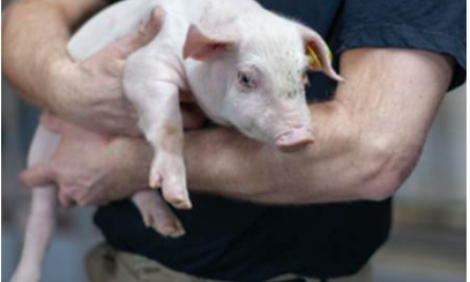



2002: The year the UK pig industry didn't disappear
By Dr John Strak - This month’s Strak report bring news of UK competition from the beef and lamb industry and considers the state of the UK pig industry during 2002.|
Dr John Strak

Dr Strak's views on the UK and global pig markets are produced in Whole Hog every fortnight. For more details click the link at the foot of the article. |
I start 2003 and my forty second Strak Report with some news about the competition and
a reminder that things weren’t quite as bad in 2002 as they might have been.
The competition this time is close to home – it’s the
beef and sheep producers who have shown the pig industry how
to move quickly. EBLEX – the new beef and lamb executive for
England modelled on BPEX – has been in existence for just a
few months. But it has already
announced that it will be setting
up a new website and price reporting service this month that
will feature a full range of market
prices including auction, dead-weight and retail. The site –
www.eblex.org.uk will be updated daily so it will remain bang
up to date.
Quite right too because understanding prices, supplies and demand are a crucial
part of how farmers make good business decisions. You have
heard me say this before, of course, although not in relation to the red meat sector.
The last time I made an observation about price reporting systems was in December 201 when
I complained that the UK pig industry was slow in coming forward to organise a better price
reporting and analysis system.
I that Strak Report I said, “..Now you start to see why pig prices in
the UK are poorly understood.... too little information on supplies,
qualities and demand.. and not enough economics..”. And, as
you read this at the beginning of 2003, nothing much has changed. But at least this column
can offer an insight into what actually happened to prices and the breeding herd in 2002.
Chart 1 shows that the reported pig price has been in a
slow decline all year in the UK.

Now, it may be that some farmers are receiving much better
prices than the reported prices
(though favourable contracts or
quality premiums)but even if this
is only a minority the key observation is that, for most of the year,
the pig price was 96.6 pence/kg
on average. That’s above the cost
of production on most farms and
explains why the sow herd
stopped contracting in 2002.
Chart 2 illustrates that the herd
size actually increased between
December 2001 and June 2002
and the June-June rate of contraction slowed to an annual rate of
c.3%. Simple really, price goes
up and producers stop going out.

Over the full twelve months it
looks like the UK pig price held
up quite well – especially in comparison to some places in the
world.In a previous Strak Report
I discussed the relationship between UK prices and the global
pig price which has been in a
strong downward trend since
April 2002. That will now be a
key relationship in 2003.
In my Christmas rant about the
need for better price reporting in
December 2001 I ever dreamt
it would be EBLEX that would
pick up the gauntlet. Good luck
to the beef and sheep producers
who benefit from anything
EBLEX does to improve things
in the red meat market. I look forward to the other white meat considering how it can keep up with
the pace that EBLEX has set.
And,for those doomsters who
thought that the UK pig industry
was ready to disappear down the
plug hole, it seems that 2002 was
not quite the black hole they
feared.
See you next month
Source: Strak Report - January 2003








